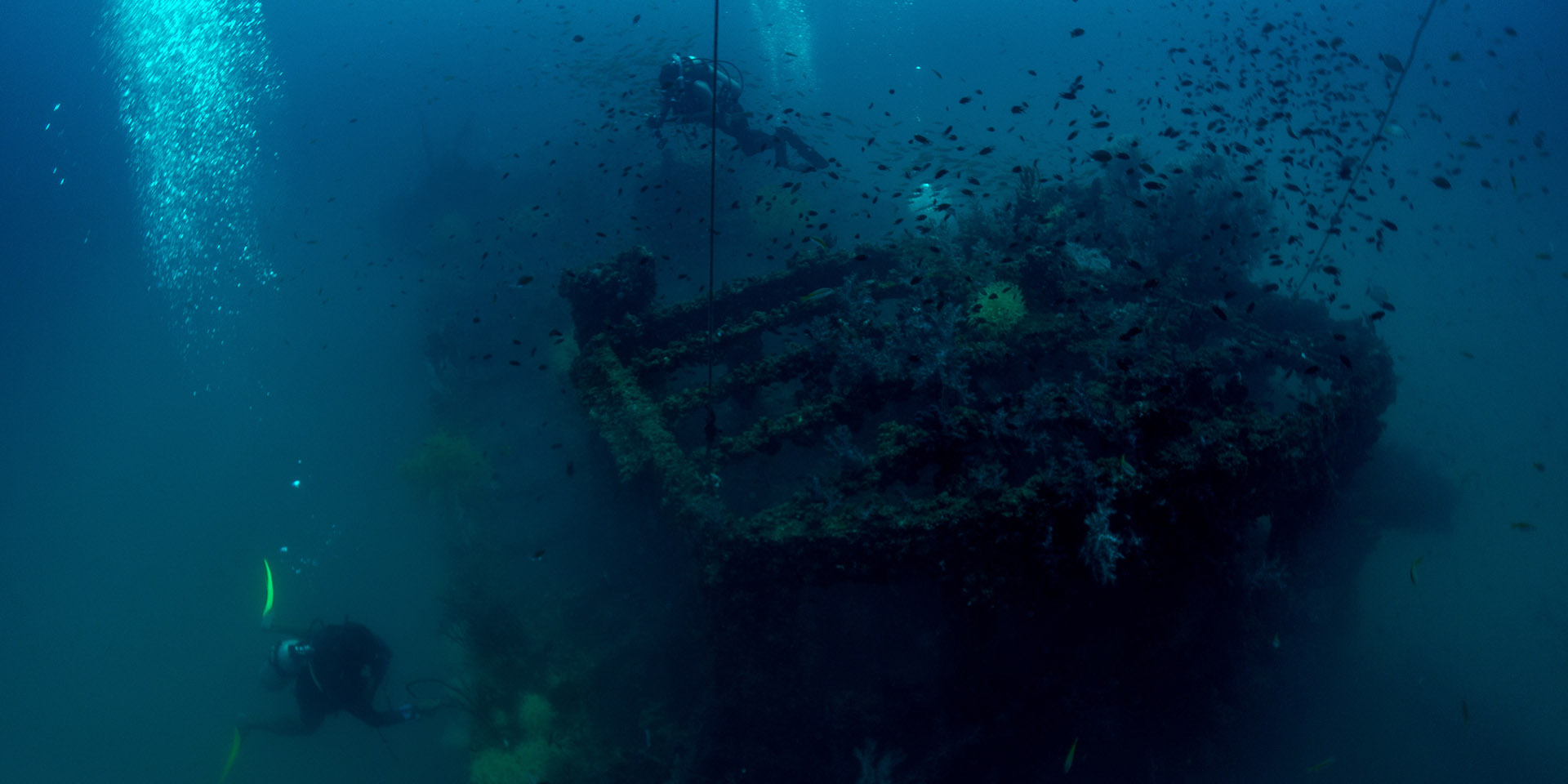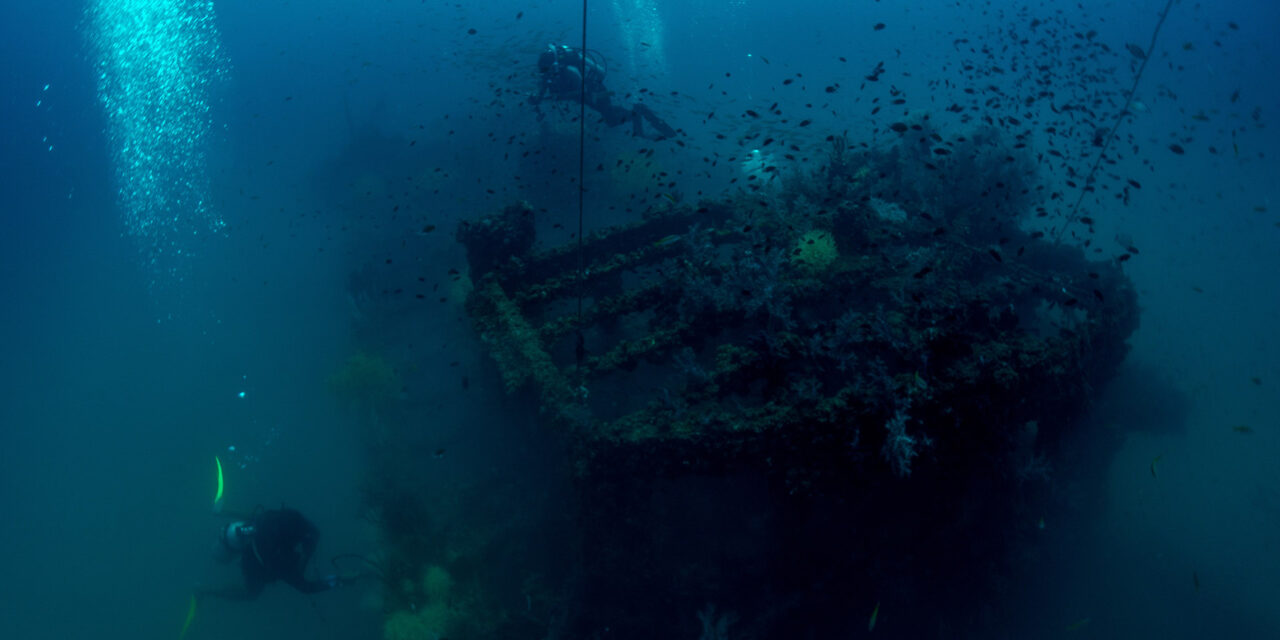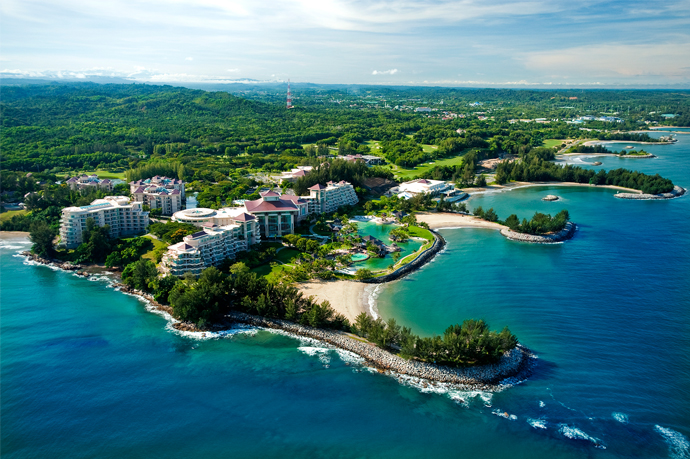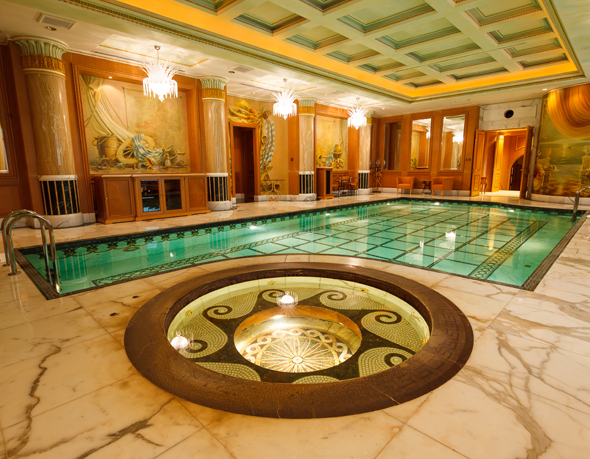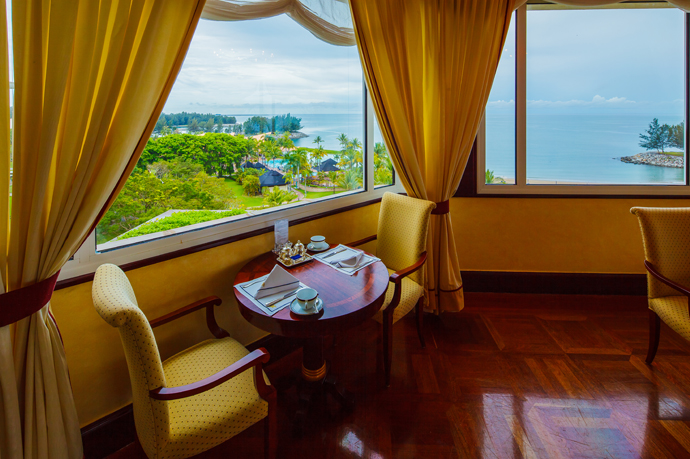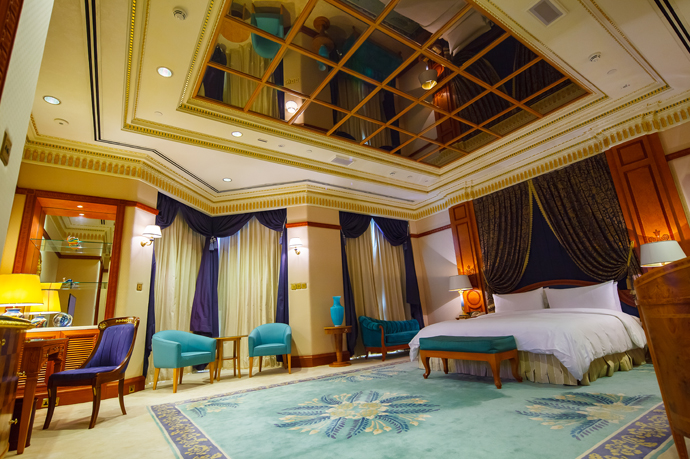WRITTEN BY
Editorial Team
PUBLISHED ON
November 29, 2017
LOCATION
Bandar Seri Begawan
Brunei is one of the least traveled gems of Southeast Asia, and Bandar Seri Begawan is the hub where travelers can get to know this hidden Sultanate more intimately. From towering mosques to playful proboscis monkeys, there are hidden treasures all around Bandar Seri Begawan.
You can be pretty much anywhere in Brunei within a few hours, and Bandar Seri Begawan is the most interesting place to see the best the country has to offer.
Stay at the Empire Hotel & Country Club
ABOVE: The Empire Hotel & Country Club.
The Empire Hotel & Country Club occupies a peninsula jutting out into the South China Sea 14 miles northwest of the capital, a luxury retreat from the tropical heat.
The Atrium Cafe tees up a sumptuous buffet breakfast with panoramic views of the ocean for guests planning their day, though the range of activities offered by the adjoining country club might dissuade many from venturing too far.
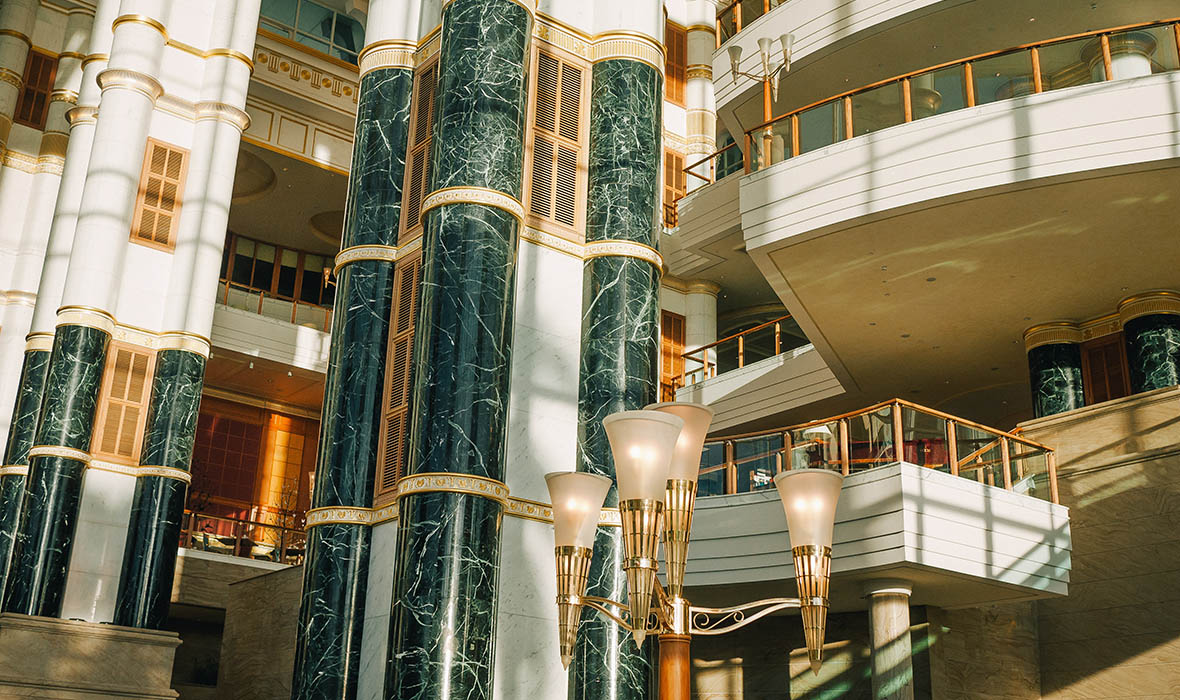
ABOVE: Interior of the Empire Hotel & Country Club.
Artificial-clay tennis courts, international standard squash and badminton courts, bowling lanes with the latest AMF technology, indoor swimming, and a state-of-the-art gym are just some of the activities on hand.
ABOVE: The Empire Hotel & Country Club includes a Jack Nicklaus-designed course.
But the pièce de résistance is the Jack Nicklaus-designed championship golf course. The challenging 7,029-yard course winds along the coast; strong sea winds blowing across narrow fairways and strategically placed bunkers will catch even the most ambitious players off-guard.
Diving
ABOVE: Wreck and reef dives from Brunei Events.
Found in the Coral Triangle, Brunei an emerging as the go-to destination for divers wanting something different. Patches of coral are found off of Tutong district, most famously the Ampa and Victoria reefs. Best visited in the dry seasons of March to November, the coral is colorful, but the life here isn’t particularly big; fans of nudibranchs and other small fauna will find much to enjoy on these reefs. All of this is found surprisingly close to Bandar Seri Begawan.
For something a little bigger there’s Rig Reef: a decommissioned oil rig now found 19 meters below Berakas. Chopped up into several pieces, the rig features all manner of coral fans and colorful wildlife, including parrotfish and barracuda.
ABOVE: Penanjung, Australian, and American wrecks from Dive Brunei.
Tantalizingly close to the capital, almost a dozen intriguing wrecks repose on the bottom of Brunei Bay. Even the furthest site, Blue Water Wreck, takes only an hour to reach by boat; the Australian, Dolphin 88 and American wrecks are even closer. The Australian wreck is by far the most popular; SS De Klerk was scuttled in 1942 and the wreck ranges from a short depth of 8 meters to 32 meters at the sandy bottom.
Architecture
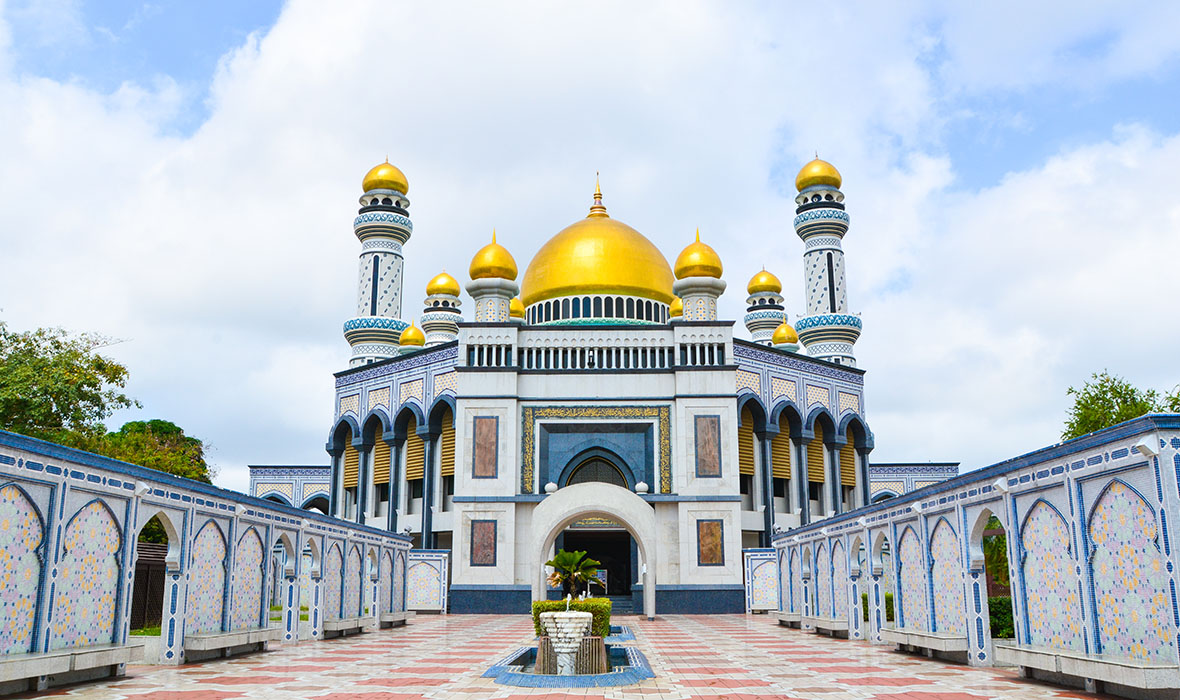
ABOVE: Jame’Asr Hassanil Bolkiah Mosque.
The call to prayer echoes across the city before dawn, calling attention to the golden domes and towering terrazzo-tile minarets of the Jame’Asr Hassanil Bolkiah Mosque, which dominates the skyline of Brunei’s capital. Guests can stroll among manicured gardens to count the full quota of 29 golden domes, built to honor the 29th Sultan of Brunei. The magnificence of the largest mosque in the country, blending Mughal and Malay architecture, is testimony to the importance of Islam in the daily lives of Brunei’s Muslim majority.
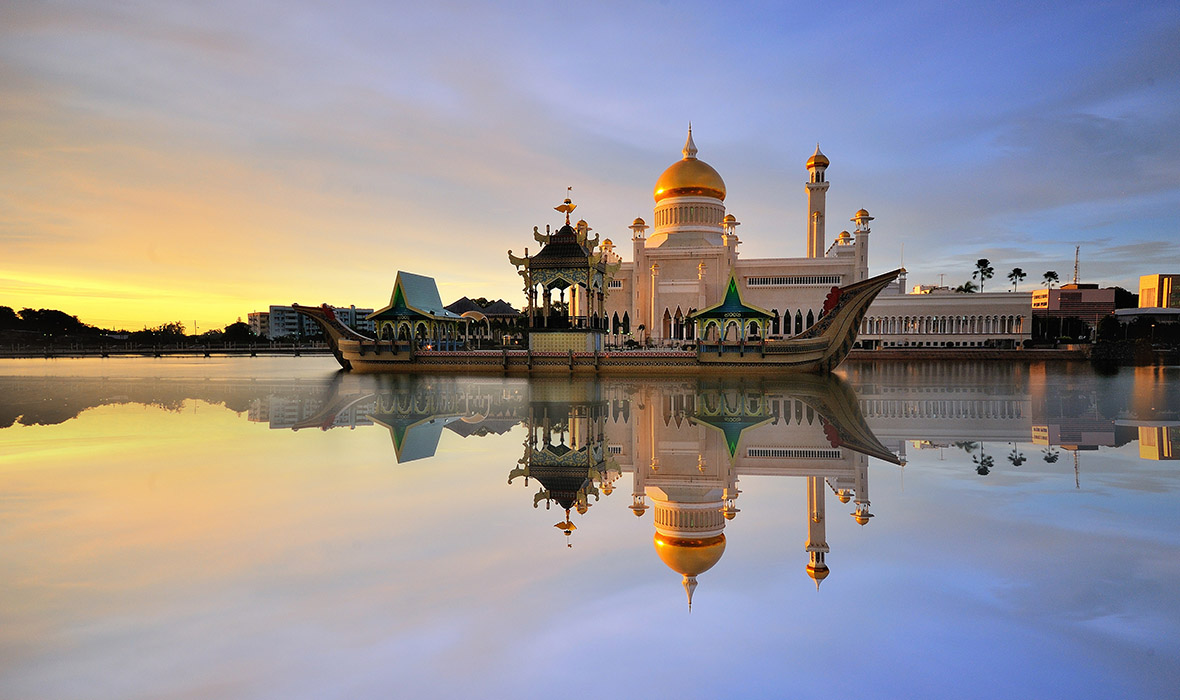
ABOVE: Sultan Omar Ali Saifuddin Mosque.
A trip to Sultan Omar Ali Saifuddin Mosque begins by walking through its famous wrought iron gates. Shining domes, marble minarets, and an opulent ceremonial barge afloat the circular manmade lagoon dominate the exterior; while the stained glass windows, Shanghai granite walls, and lavish chandeliers make for an equally impressive interior.
Also of note is Ash-Shaliheen Mosque, which features a retractable roof and can seat up to 1,000 people at once; it was built by celebrated Egyptian architect Abdel-Wahed El-Wakil.
Visit the Kampong Ayer Water Village
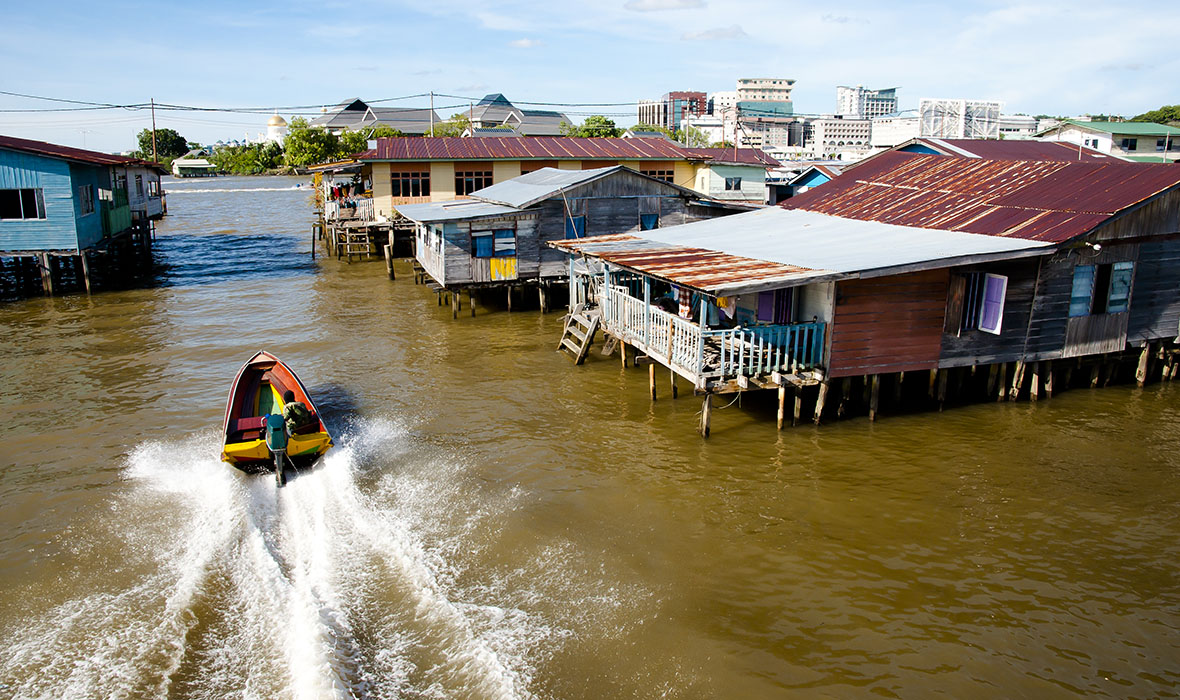
ABOVE: A small boat works its way through Kampong Ayer Water Village, which houses 50 percent of the capital.
Inhabited for more than 1,300 years, Kampong Ayer water village is a network of 42 separate stilt communities, housing 50 percent of the capital and nearly 10 percent of the entire population of Brunei.
The image invoked by Ferdinand Magellan’s “Venice of the East” seems incongruent with the sturdy-yet-unique structures that make up the world’s largest water village. Colorful timber houses in sun-bleached shades of green, blue, pink, and yellow are continually upgraded with modern materials to withstand the harsh monsoonal weather.
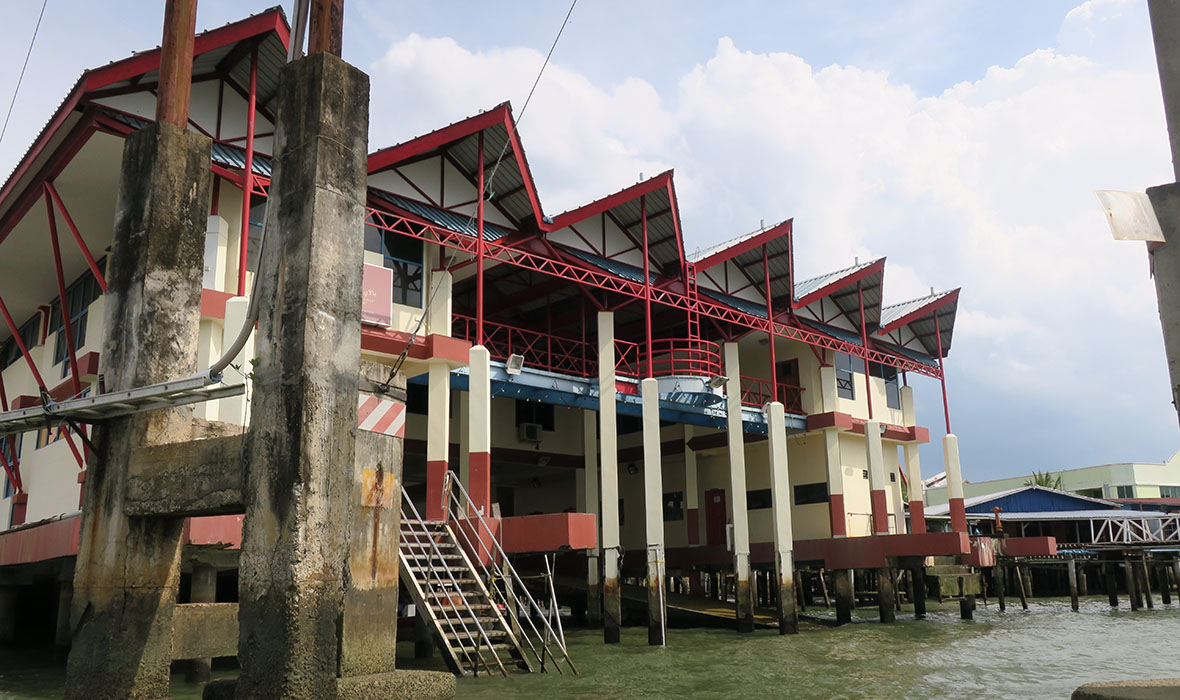
ABOVE: The Kampong Ayer Water Village firehouse.
Wandering along the more than 18 miles of walkways and footbridges linking almost 4,000 buildings, travelers will witness all the modern amenities and services expected in a thriving society. Luxury cars parked on the opposite bank are testament to the ongoing prosperity of many of the residents who live in this unique setting.
Nature
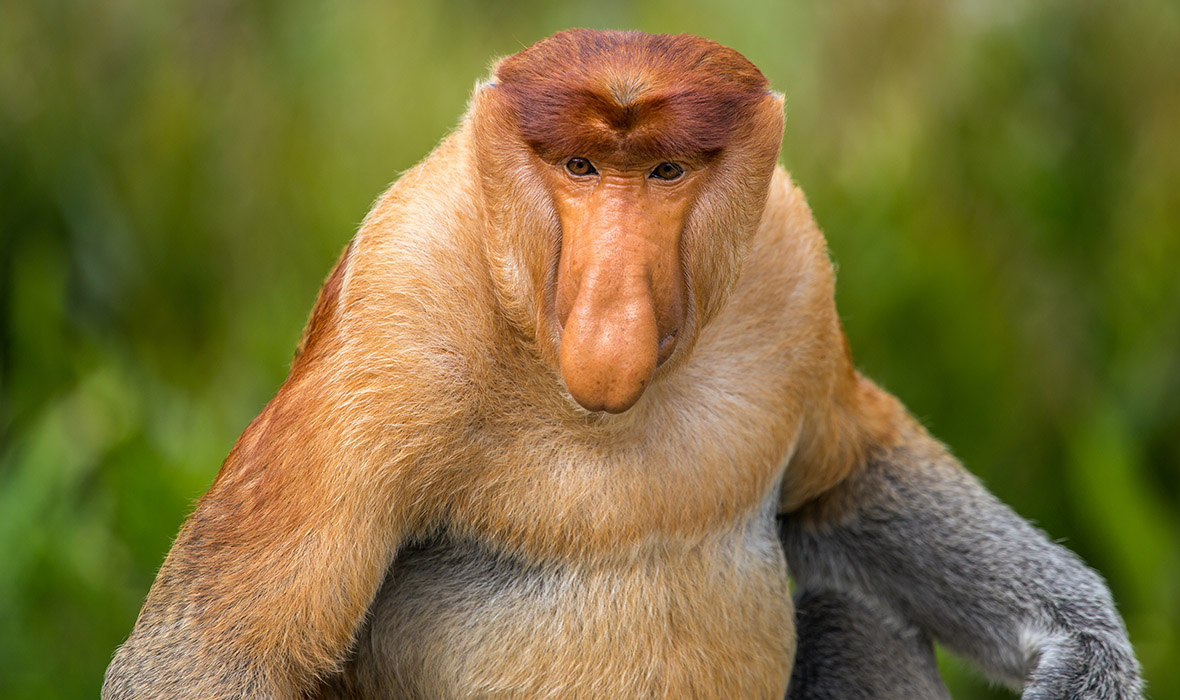
ABOVE: A proboscis monkey, found in Brunei’s equatorial jungles.
Equatorial jungles, cut by rivers and bordered by rich mangrove ecosystems dominate the landscape of tropical Brunei, providing a rich environment for the hundreds of species of flora and fauna, many unique to the region. Despite large numbers, these shy creatures, protected by thick foliage, remain elusive.
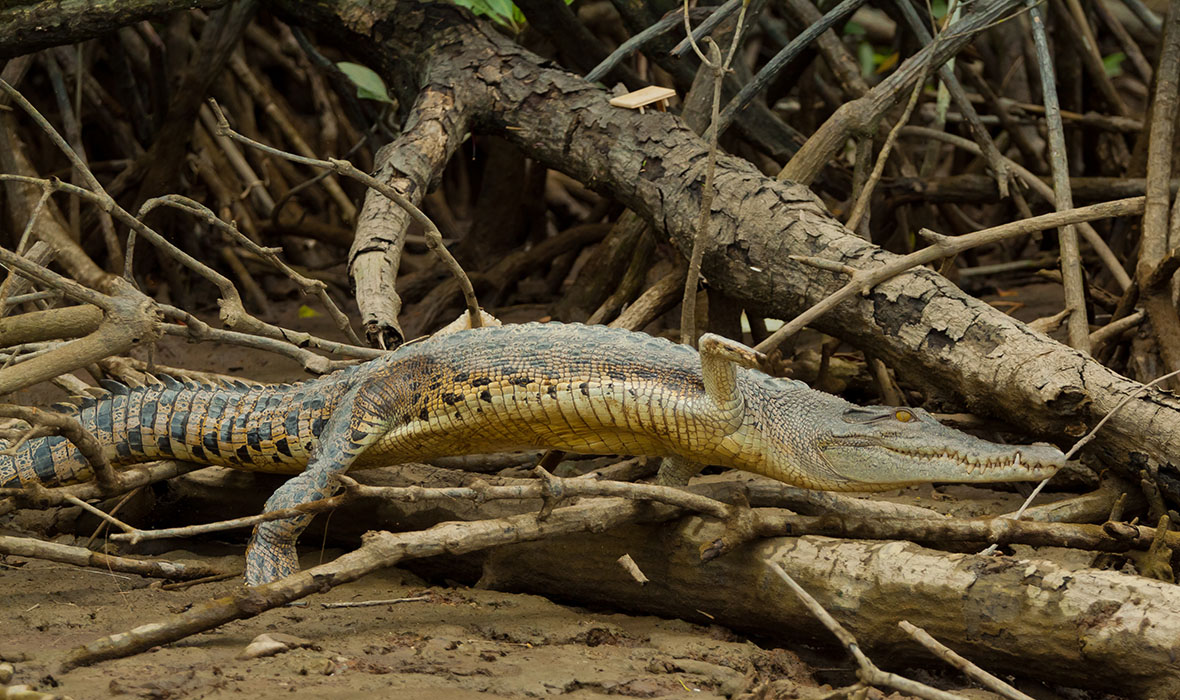
ABOVE: A crocodile works its way through the Brunei mangroves.
Just minutes from the center of the modern capital are isolated mangroves where nature flourishes. Guests can venture aboard an open-deck wooden boat in search of the famous proboscis monkey. Even with their comically large red snout, which can grow up to four inches long, this rare primate is challenging to spot without the trained eye of an experienced local guide. Early morning and evening, as they venture down to the water’s edge, provides the greatest chances.
While gently floating towards the narrow mangrove channels, travelers can glimpse mudskippers jumping on the banks, and a flash of cobalt as a tiny kingfisher plunges into the water to catch its prey. Otters, crocodiles and more than 300 species of tropical birds can, for the lucky ones, be spotted from the deck of the boat – often positioned close enough to get great photos with even the most basic camera equipment.

